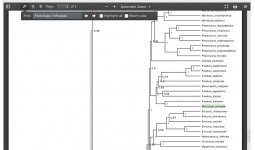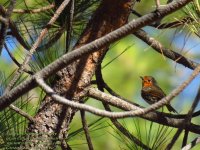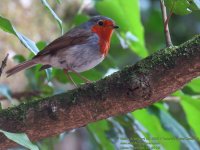The recent description as far as I can judge is nomenclaturally valid. The previous ones, indeed, were not valid due to a lack of type fixation.
The only published genetic data are cytochrome-b sequences from the paper linked by Richard above. (Albeit if you want a more or less "normal" quality pdf, you can download the whole issue of
Avian Science [
here].) These data suggest that the dominant Gran Canaria haplogroup is basal, while the dominant Tenerife haplogroup is sister to (but still quite deeply divergent from) the nominate haplogroup. The support for these relationships was not terribly high, however; one bird from Tenerife was found to have a "Gran Canaria-like" haplotype; and of course mtDNA never shows more than a part of the "truth".
Bergmann & Schottler 2001 [
here] have suggested vocal differences between
superbus and
rubecula, but they did not consider the possibility that
superbus might be more than one taxon; and so far as can be judged, they used only material from Tenerife.
For what it's worth, there are also data from the Canaries in
BOLD (cox1, genetic barcodes), that also show two deeply divergent clades, but these are not (yet) public, so you can't see any detail. Somewhat more intriguingly, BOLD also has a single barcode, from [
a bird from Krasnodar], NE of the Black sea in Russia, that is deeply divergent from all other sequences too.








